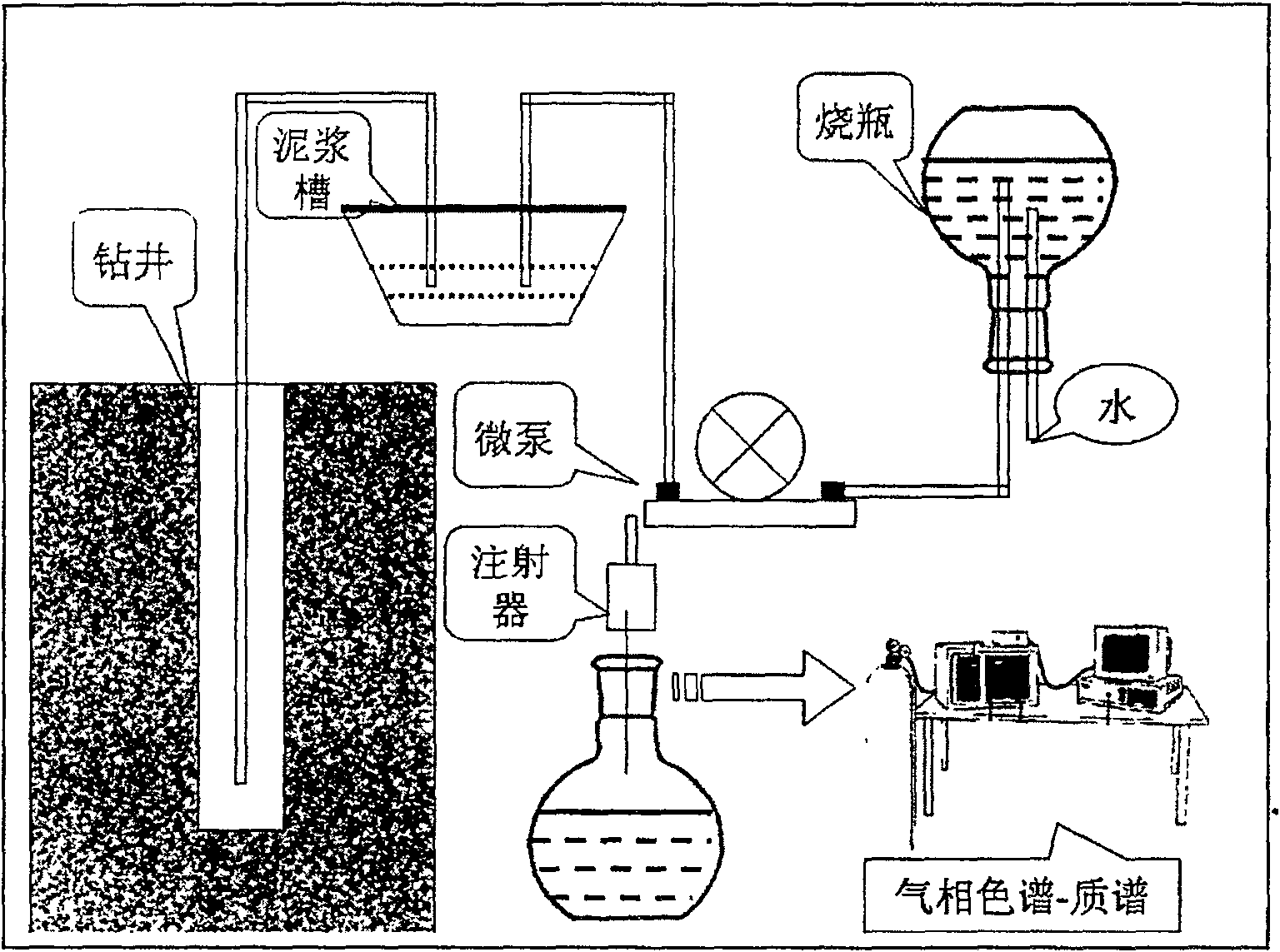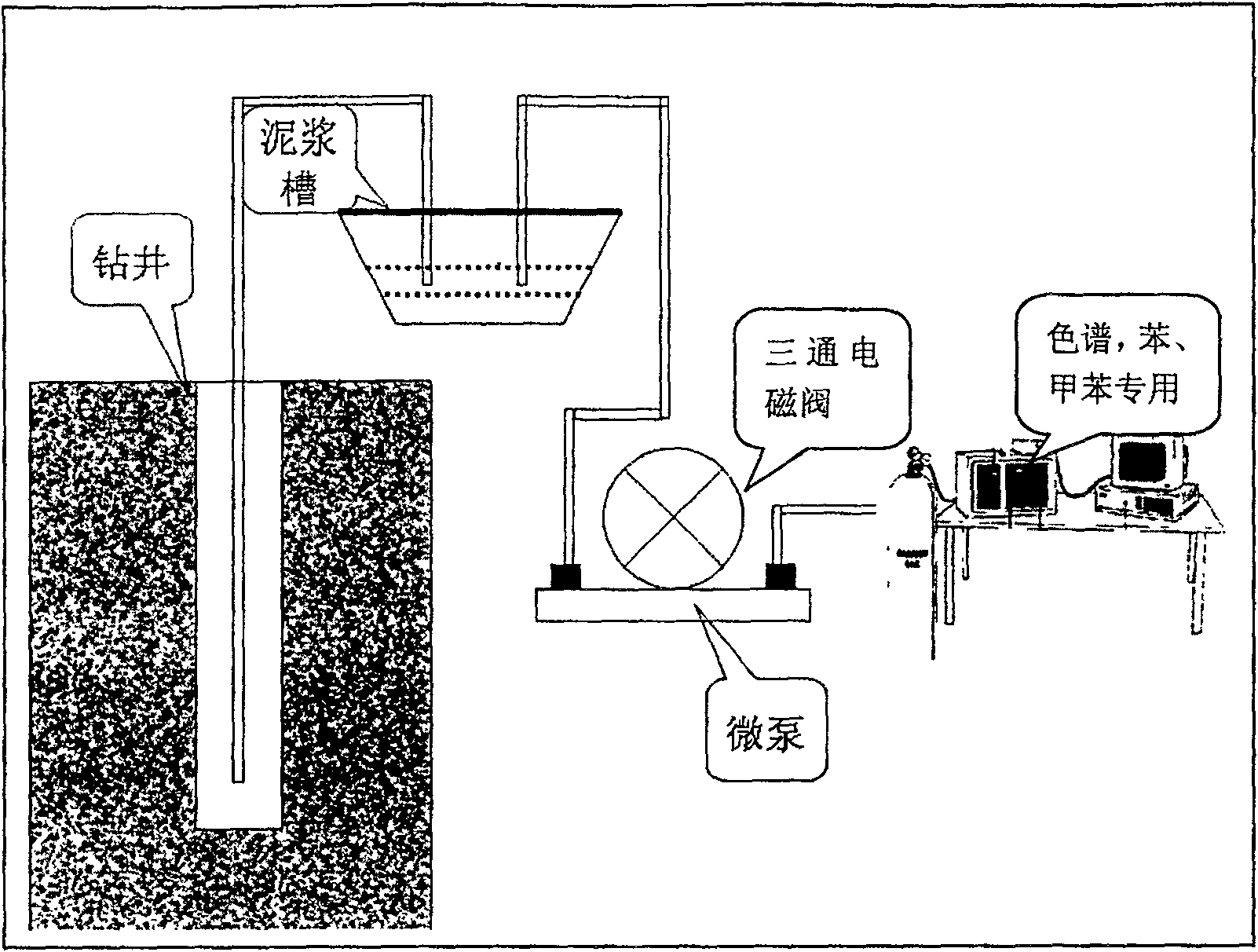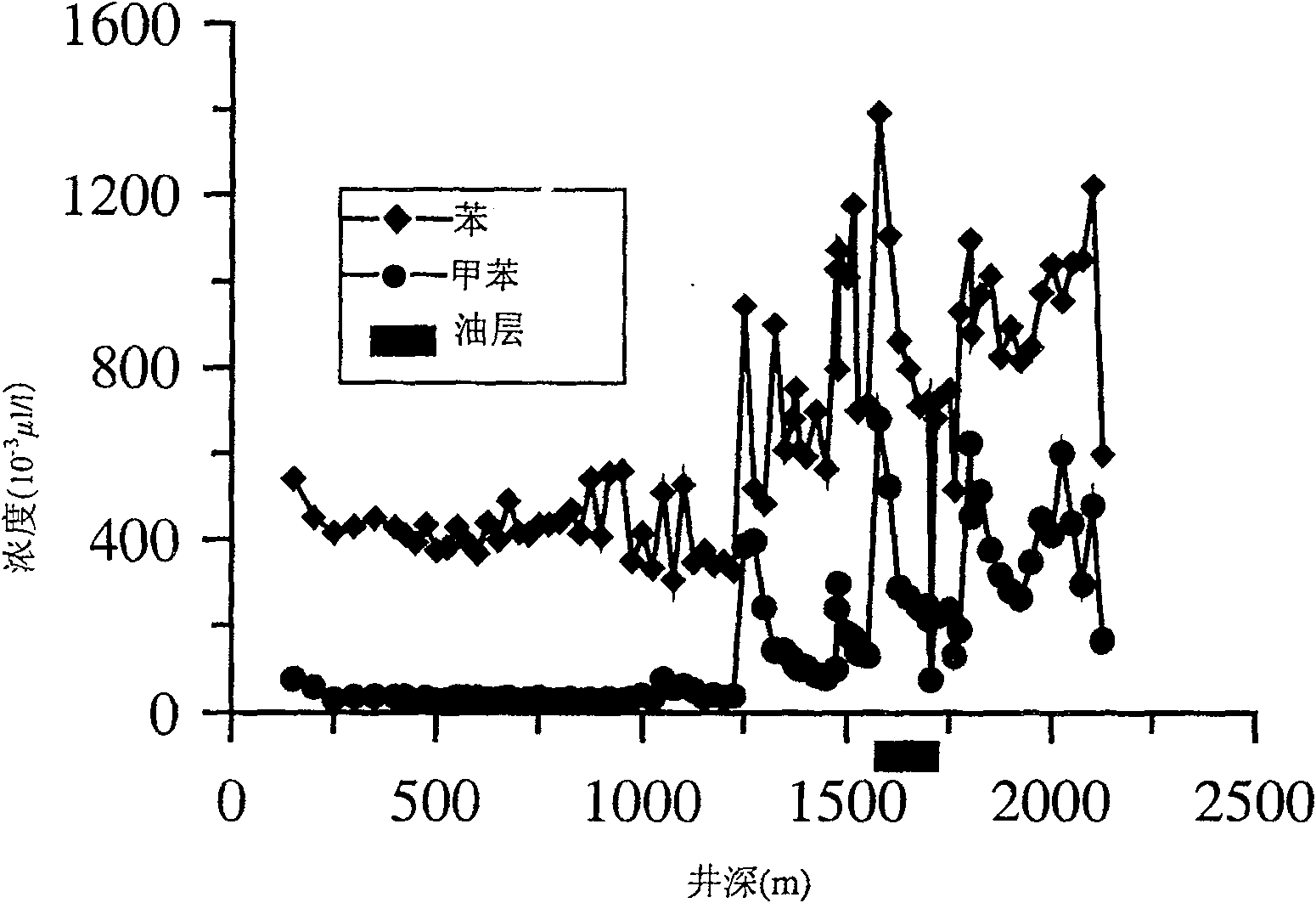Method of predicting deep oil-gas layer based on benzene and toluene abnormality of well drilling back gas
A technology for oil and gas formation and slurry return, which is applied to measurement devices, earth-moving drilling and production, wellbore/well components, etc. It can solve the problems of no application, interference, and application effect limitation, and achieve sensitive measurement methods, rapid measurement, and convenient sampling. Effect
- Summary
- Abstract
- Description
- Claims
- Application Information
AI Technical Summary
Problems solved by technology
Method used
Image
Examples
Embodiment Construction
[0018] This method contains the following steps in sequence:
[0019] Slurry-returning gas samples are collected while drilling → high-sensitivity measurement of benzene and toluene content → data analysis (combined with formation depth and structural traps) → prediction of the approximate depth of the underlying deep oil layer (or gas layer).
[0020] 1. Collection of return slurry gas while drilling:
[0021] When the sample is to be sent to the laboratory for measurement, use two needles, a soft sealing rubber stopper and a glass bottle and follow the sampling steps below to drain water and take air: first fill the glass bottle with saturated saline and seal it with a soft sealing rubber Seal the mouth of the bottle with a stopper; then use two needles at the same time, one of the needles is sealed with a hose, which is connected to the outlet of the micro-motion pump, and then put the hose connected to the inlet of the micro-motion pump into the At the entrance of the...
PUM
 Login to View More
Login to View More Abstract
Description
Claims
Application Information
 Login to View More
Login to View More - R&D
- Intellectual Property
- Life Sciences
- Materials
- Tech Scout
- Unparalleled Data Quality
- Higher Quality Content
- 60% Fewer Hallucinations
Browse by: Latest US Patents, China's latest patents, Technical Efficacy Thesaurus, Application Domain, Technology Topic, Popular Technical Reports.
© 2025 PatSnap. All rights reserved.Legal|Privacy policy|Modern Slavery Act Transparency Statement|Sitemap|About US| Contact US: help@patsnap.com



